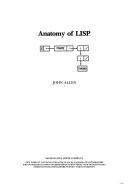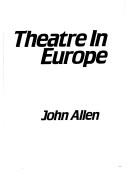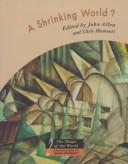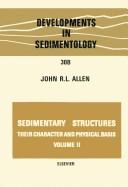| Listing 1 - 10 of 22 | << page >> |
Sort by
|

ISBN: 007001115X 9780070011151 Year: 1978 Volume: vol *15 vol *5 Publisher: New York McGraw-Hill
Abstract | Keywords | Export | Availability | Bookmark
 Loading...
Loading...Choose an application
- Reference Manager
- EndNote
- RefWorks (Direct export to RefWorks)
Programming --- LISP (list processor language) --- LISP (Computer program language) --- LISP (Langage de programmation) --- 681.3*D32 --- 681.3*I25 --- List processing computer language --- List processing (Electronic computers) --- language classifications: applicative languages; data-flow languages; design languages; extensible languages; macro and assembly languages; nonprocedural languages; specialized application and very high-level languages (Programminglanguages) --- Programming languages and software: expert system tools and techniques (Artificial intelligence)--See also {681.3*D32} --- LISP (Computer program language). --- 681.3*I25 Programming languages and software: expert system tools and techniques (Artificial intelligence)--See also {681.3*D32} --- 681.3*D32 language classifications: applicative languages; data-flow languages; design languages; extensible languages; macro and assembly languages; nonprocedural languages; specialized application and very high-level languages (Programminglanguages) --- Lisp [Langage de programmation]. --- Lisp [Programmatietaal].

ISBN: 0903931400 Year: 1981 Publisher: Eastbourne John Offord Publications
Abstract | Keywords | Export | Availability | Bookmark
 Loading...
Loading...Choose an application
- Reference Manager
- EndNote
- RefWorks (Direct export to RefWorks)
Theater --- 792.07 --- 792.07 Toneelbedrijvigheid. Toneelactiviteiten. Theaterberoepen --- Toneelbedrijvigheid. Toneelactiviteiten. Theaterberoepen --- Theatrical science --- dramaturgie --- theater --- anno 1900-1999 --- Europe

ISBN: 0435180355 0435180347 038920398X Year: 1983 Publisher: London Heinemann Educational Books
Abstract | Keywords | Export | Availability | Bookmark
 Loading...
Loading...Choose an application
- Reference Manager
- EndNote
- RefWorks (Direct export to RefWorks)
Theatrical science --- theatergeschiedenis --- Europe --- History --- drama [discipline]

ISBN: 038920398X Year: 1983 Publisher: London
Abstract | Keywords | Export | Availability | Bookmark
 Loading...
Loading...Choose an application
- Reference Manager
- EndNote
- RefWorks (Direct export to RefWorks)
Theatrical science --- History --- Europe
Book
Year: 1962 Publisher: London Phoenix House
Abstract | Keywords | Export | Availability | Bookmark
 Loading...
Loading...Choose an application
- Reference Manager
- EndNote
- RefWorks (Direct export to RefWorks)
Book
ISBN: 0435180339 Year: 1981 Publisher: London
Abstract | Keywords | Export | Availability | Bookmark
 Loading...
Loading...Choose an application
- Reference Manager
- EndNote
- RefWorks (Direct export to RefWorks)

ISBN: 0198741863 0198741871 Year: 1995 Publisher: Oxford Oxford University Press
Abstract | Keywords | Export | Availability | Bookmark
 Loading...
Loading...Choose an application
- Reference Manager
- EndNote
- RefWorks (Direct export to RefWorks)
Communication, International. --- Economic geography. --- Human geography. --- International organization. --- Human geography --- Geografie --- Sociale geografie --- Algemene Werken. --- National wealth --- Social geography
Book
ISBN: 9780674035348 0674035348 0674053494 9780674053496 9780674064058 0674064054 Year: 2012 Publisher: Cambridge, Mass. The Belknap Press of Harvard University Press
Abstract | Keywords | Export | Availability | Bookmark
 Loading...
Loading...Choose an application
- Reference Manager
- EndNote
- RefWorks (Direct export to RefWorks)
Though we have other distinguishing characteristics (walking on two legs, for instance, and relative hairlessness), the brain and the behavior it produces are what truly set us apart from the other apes and primates. And how this three-pound organ composed of water, fat, and protein turned a mammal species into the dominant animal on earth today is the story the author seeks to tell in this book. Adopting what he calls a bottom-up approach to the evolution of human behavior, the author considers the brain as a biological organ; a collection of genes, cells, and tissues that grows, eats, and ages, and is subject to the direct effects of natural selection and the phylogenetic constraints of its ancestry. An exploration of the evolution of this critical organ based on recent work in paleoanthropology, brain anatomy and neuroimaging, molecular genetics, life history theory, and related fields, this book shows us the brain as a product of the contexts in which it evolved : phylogenetic, somatic, genetic, ecological, demographic, and ultimately, cultural-linguistic. Throughout, the author focuses on the foundations of brain evolution rather than the evolution of behavior or cognition.
Brain --- Human evolution. --- Evolution. --- Growth. --- Evolution (Biology) --- Physical anthropology --- Evolutionary psychology --- Human beings --- Origin --- Affective and dynamic functions --- Evolution. Phylogeny --- Physiology of nerves and sense organs
Book
Abstract | Keywords | Export | Availability | Bookmark
 Loading...
Loading...Choose an application
- Reference Manager
- EndNote
- RefWorks (Direct export to RefWorks)

ISBN: 9780444419453 0444419454 Year: 1981 Publisher: New York Elsevier Scientific Pub. Co
Abstract | Keywords | Export | Availability | Bookmark
 Loading...
Loading...Choose an application
- Reference Manager
- EndNote
- RefWorks (Direct export to RefWorks)
| Listing 1 - 10 of 22 | << page >> |
Sort by
|

 Search
Search Feedback
Feedback About UniCat
About UniCat  Help
Help News
News